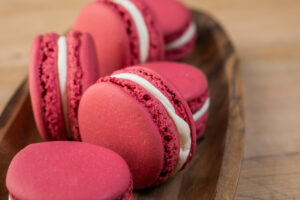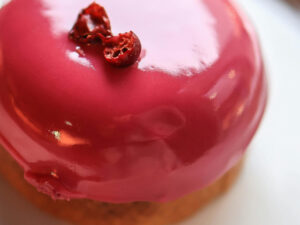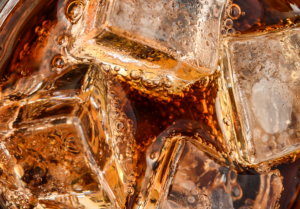Titanium Dioxide Alternatives
When you think about the natural colors that are added to your foods and beverages, your mind probably jumps straight to vibrant reds, oranges, greens or yellows. But in reality, white, the color that contains all the colors, is used in a wide range of foods and drinks and for a variety of functional effects.
Titanium dioxide is the most effective, most affordable, and most-used white color. But with recent changes to the usage recommendations, many companies around the world need alternatives for their food and beverages.
In this article we’ll talk about what makes titanium dioxide so special as a colorant and go through some of the current available options that can be used as functional alternatives in different formulations.
What is Titanium Dioxide?
Titanium dioxide (E171) is a naturally occurring mineral that is bright white in appearance, and the default white pigment in many industries. Its chemical structure makes it ideal for refracting light and its particle size allows it to disperse evenly throughout a formulation.
It doesn’t show preferential absorption for any wavelength of light, reflecting all its components equally. And since it’s comprised of tiny particles, you can add the effect of light scattering, meaning that light bounces from one particle to the other in infinite jumps that induce the effect of opacity or clouding in liquids and an outstanding coating effect on solid surfaces. That’s why it is ideal for whitening or creating opacity in food and beverage applications.
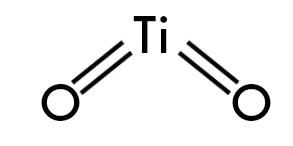
The EFSA Decision & Its Cascades
Following a request by the European commission in March of 2020, the European Food Safety Authority (EFSA) announced it would no longer consider titanium dioxide safe as a food additive.
This decision was based on the review of all available scientific studies and data relating to the concern of genotoxicity of the potential for accumulation of nanoparticles in the body over time.
Meanwhile, many other regulatory bodies did not find conclusive evidence for genotoxicity including JECFA, the USA FDA, Health Canada, Australia and New Zealand Food Standards and UK Food Standards Agency. Nonetheless, other countries like Turkey, Qatar, Jordan and Saudi Arabia, have taken the precautionary approach of the European Community establishing bans for the use of this color additive in foods and drinks. And alongside, food manufacturers from around the world are actively looking for suitable alternatives to fill the gap in TiO2’s various functionalities.
So, without titanium dioxide what’s on the table for alternative whites, clouds, and coating effects?
Alternatives to Titanium Dioxide
Calcium Carbonate
Calcium carbonate is a bright white, naturally occurring micro-crystalline mineral. Although it has larger particle sizes and a lower refractive index than titanium dioxide, meaning it’s less effective at reflecting light, it’s an appropriate option for applications like white coatings on confections and as an opacity agent in some liquid preparations like sauces and soups.
You can see in the image below that calcium carbonate provides a similar white coating on the outside of chocolate bits compared to titanium dioxide. Because calcium carbonate is mildly basic in nature, it is not ideal for use in acidic conditions below a pH of around 3.0.
Calcium carbonate is permitted as a food color in the EU, US, Australia, and New Zealand.

Pure White: Like Calcium Carbonate, but brighter!
Did you know that adding a small amount of a bluish pigment to a white color enhances its whiteness? This is in part because of a psychological contrast that increases the perceived brightness, and because of subtractive mixing, with the blue pigment absorbing red and yellow light, making the remanent reflected light looking slightly cooler.
Our Pure White is a great solution to get a brighter white in applications where calcium carbonate is used. It brings value to plant-based foods like faux chicken, cheese, or fish and works wonders in panned confections. Pure White is labeled as calcium carbonate and spirulina.
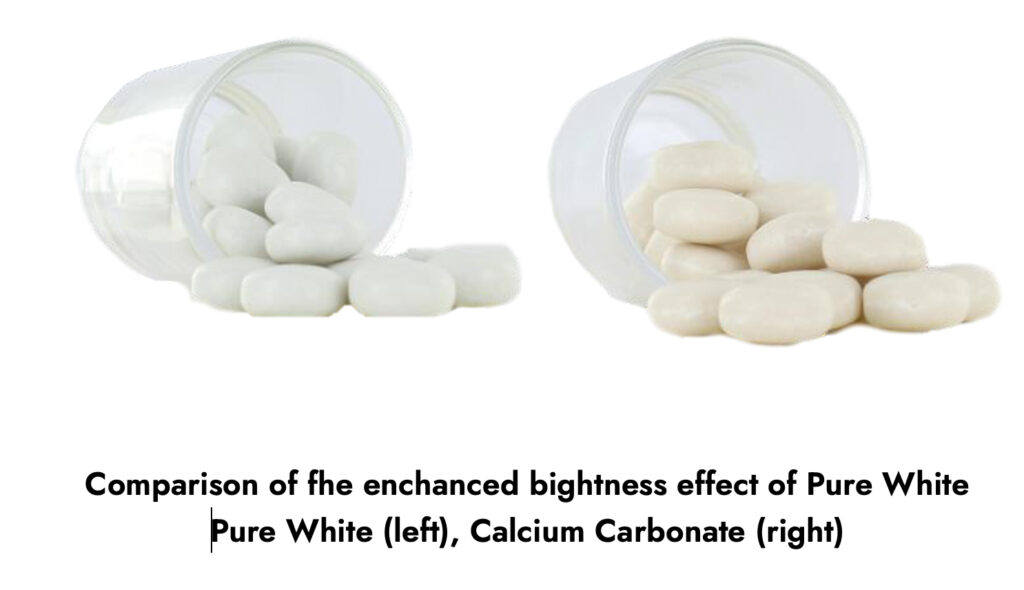
Vegebrite® White: Cloudy and opaque
Starch-based options are alternatives to replace titanium dioxide when functional opacity is required. Our Vegebrite® White is a rice starch-based alternative that adds opacity to panned candies. The differentiator in Vegebrite® White is its high gelling temperature (80ºC), and small granular size compared to other starches. It’s suitable for candies that are designed to remain white, or as a substrate base to get brighter colors from additional pigments added as subsequent layers.
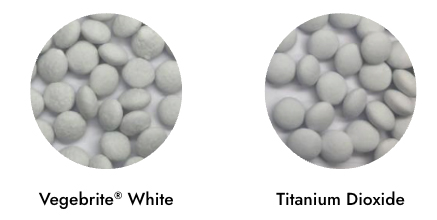
NEW! emSeal® White PWS
Our newest alternative to titanium dioxide is a clean label, universally approved, and cost convenient clouding agent called emSeal® White. As its name suggests, it’s an oil in water emulsion whose highly stable and carefully controlled particle size distribution provides excellent light scattering properties to give a pulpy or creamy appearance to instant drinks of pH levels from 3 to 7.
The product is approved in all regions, and the best part: unlike calcium carbonate, starch-based products or even titanium dioxide, it won’t sediment in the reconstituted liquid, remaining evenly dispersed, up to the moment of consumption.
While none of these options is an exact match for titanium dioxide, in most cases, it is possible to replace it with an alternative to achieve a similar effect in many food and beverage applications.
Looking for guidance on how to replace titanium dioxide in your formulation? Contact us for a color consult.


